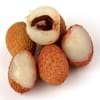Health Benefits
Cancer prevention, Heart care, Improves eye vision, Reduces stress, Regulation of heart rate
Anti-oxidant properties, Boosts immune system, Skin rejuvenation, Strengthening of bones
General Benefits
Anti oxidant properties, Eye care
Antiseptic properties, Cures headache, Removes waste from kidney
Skin Benefits
Heals sunburn, Reduces wrinkles, Treatment of skin diseases
Hydrates skin
Hair Benefits
Prevents hair loss
Good conditioner
Allergy Symptoms
Abdominal pains, Anaphylaxis, Breathing difficulty, Diarrhea, Dizziness, Hives, Itching, Lightheadedness, Nasal congestion, Nausea, Swelling of mouth, tongue or lips, Tingling sensation in mouth, Vomiting, Wheezing
Chest pains, Rhinitis, Wheezing
Side Effects
Allergic reaction
Unknown
Best Time to Eat
As a snack in the late afternoon, Eat the fresh ones, avoid mixing with any other foods, don't eat after meal., Morning time (before lunch)
As a snack in the late afternoon, Don't consume at night and before bed, Eat the fresh ones, avoid mixing with any other foods, don't eat after meal., Morning time (before lunch)
Vitamin B5 (Pantothenic Acid)
Vitamin C (Ascorbic Acid)
Vitamin K (Phyllochinone)
Calories in Fresh Fruit with Peel
Calories in Fresh Fruit without Peel
Not Available
Not Available
Calories in Jam
Not Available
Calories in Pie
Not Available
Type
Tree fruit
Tree fruit, Tropical
Season
Autumn, Summer
Early summer, Early winter, Late fall, Late spring
Varieties
Reliance, Sweet Scarlet, Spring Snow, Sugar May, Santa Rosa, Red Beauty, Glowhaven, Cresthaven and Redhaven Peaches
Rongrien, Chompu, Rapiah, Bingjai and Lebak Bulus
Color
Pink, Red, White, Yellow, Yellowish-orange
Coral red, Yellow
Inside Color
Yellow
Greyish-white
Soil Type
Sandy loam, Well-drained
Clay, Loam
Climatic Conditions
Cold, Warm
Humid
Facts about
- In china, peaches are considered as a symbol of good luck.
- From 1982, august is National peach month in USA.
- In roman times, Peaches were also called as Persian apples, as people assumed that they originated from Persia.
- Oils extracted from its seeds is used to make soaps and candles.
- 'Rambut' means hairy in Malay.
- It makes the best hair mask.
- Seeds are edible and healthy too.
Top Producer
China
Thailand
Other Countries
Greece, Italy, Spain, United States of America
Africa, India, Indonesia, Malaysia, Philippines, Sri Lanka
Top Importer
Germany
Singapore
Top Exporter
Spain
Thailand
Botanical Name
Prunus persica
Nephelium lappaceum
Synonym
Not Available
Rambota
Subkingdom
Tracheobionta
Tracheobionta
Division
Magnoliophyta
Tracheophyta
Class
Magnoliopsida
Magnoliopsida
Family
Rosaceae
Sapindaceae
Species
P. persica
N. lappaceum
Generic Group
Rose
Not Available
Difference Between Peach and Rambutan
We might think that Peach and Rambutan are similar with respect to nutritional value and health benefits. But the nutrient content of both fruits is different. Peach and Rambutan Facts such as their taste, shape, color, and size are also distinct. The difference between Peach and Rambutan is explained here.
The amount of calories in 100 gm of fresh Peach and Rambutan with peel is 39.00 kcal and 69.00 kcal and the amount of calories without peel is Not Available and Not Available respectively. Thus, Peach and Rambutan belong to Low Calorie Fruits and High Calorie Fruits category.These fruits might or might not differ with respect to their scientific classification. The order of Peach and Rambutan is Rosales and Sapindales respectively. Peach belongs to Rosaceae family and Rambutan belongs to Sapindaceae family. Peach belongs to Prunus genus of P. persica species and Rambutan belongs to Nephelium genus of N. lappaceum species. Beings plants, both fruits belong to Plantae Kingdom.









